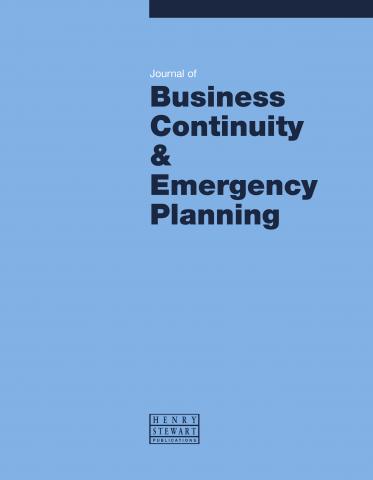"It's very exciting to see a peer-reviewed journal for our field. I'm impressed with the range of topics but also that the journal analyses emerging trends in all areas of advancement and communications. The quality of the articles I've seen so far is also very nice to see."
Turning islands into bridges: Community-based response after a catastrophic earthquake
Click the button below to download the full text of the article.
Abstract: The workforce rallying point model is intended to activate within the first 24 hours after a catastrophic earthquake. Its purpose is to provide employees with access to critical information and early response assignments following a Cascadia subduction zone-type event. The consequences from a catastrophic event could include loss of communication with departmental leadership, as well as loss of safe worksite facilities. A systems failure of this magnitude requires rethinking traditional centralised disaster response models. Building from lessons learned in past catastrophes, the City of Seattle is rewriting its earthquake response plan to account for an unknown period of isolation. The Seattle Office of Emergency Management has identified eight sites as potential workforce rallying points based on anticipated impacts to bridges, roadways and other infrastructure. Workforce rallying points serve four primary purposes: (1) citywide communications connectivity for consequence management activities, (2) City of Seattle staff collection and assignment points, (3) impact assessment and reporting hubs, and (4) public information distribution points, including the availability of in-language community messaging. The new plan embraces decentralised decision making, through workforce rallying points, and by supporting community empowerment through spontaneous community response efforts.
Keywords: workforce rallying point; community lifelines; earthquake; catastrophe; isolation phase; Cascadia
Consuelo Crow holds a graduate degree in multidisciplinary anthropology, and has 14 years of experience in location-based ethnographic research in global wars and conflict zones. In the past four years she has worked with the City of Seattle’s Homeless Strategy and Investments division. She developed and managed the country’s first Native Americanserving hotel shelter. Her career has focused on historic preservation law, built environments, human migration, material culture, necropolitics and resource scarcity, and she is passionate about addressing the needs of underserved and underrepresented communities who need outreach and services in times of crisis. She has worked as a planning and development specialist, managing city, state and federal emergency relief funding, capital projects and the enhanced shelter needs of people experiencing homelessness during the COVID-19 pandemic. Consuelo is a is a proud member of the Pascua Yaqui Nation, speaks five languages, including her Indigenous language, and is a published author.
Lucia Schmit is Director of the Snohomish County, WA Department of Emergency Management. Prior to this, she was Planning Coordinator for the City of Seattle Office of Emergency Management, where she facilitated inter-departmental emergency planning efforts, including leading the development of the City’s catastrophic earthquake plan. She has led the development of disaster management strategies and programmes at the local, state, federal and international levels. While working for the Federal Emergency Management Agency, for example, she led the 2017 revision of the National Incident Management System and developed supporting guidance and tools. Before this, she worked for the US Forest Service Office of International Programs, managing disaster management technical assistance programmes in developing countries. Lucia also gained emergency management experience with local and state government in Virginia and the US National Capital Region. Lucia is a Certified Emergency Manager by the International Association of Emergency Managers and has a master’s degree from George Washington University’s Institute for Crisis, Disaster and Risk Management.



